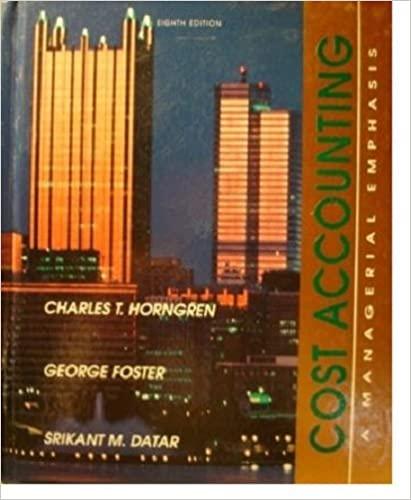Chapter 11 Demonstration problems Issuance of Common Stock: The issuance of common stock affects only paid-in capital accounts. When the issuance of common stock for cash is recorded, the par value of the shares is credited to Common Stock, and the portion of the proceeds that is above or below par value is recorded in a separate paid-in capital account Par Value = legal capital that cannot be retumed to share holders in the form of dividends Paid in Capital in Excess of = amount paid in excess or below of par value 1. Assume Hydro-Slide, Inc., issues 1,000 shares of $1 par value common stock at par for cash. The entry to record the transaction is: 2. If Hydro-Slide, Inc., issues an additional 1.000 shares of the S1 par value common stock for cash at $5 per share, the entry is: 3. Assuming Hydro-Slide, Inc., has retained earnings of $27,000, the stockholders' equity section of the balance sheet would be: HYDRO-SLIDE, INC. Balance Sheet (partial) Stockholders' equity Paid-in capital Common stock Paid-in capital in excess of par value Total paid-in capital Retained earnings Total stockholders' equity Treasury Stock: Treasury stock is a corporation's own stock that has been issued, fully paid for, reacquired by the corporation and held in its treasury for future use. Cost Method of accounting for treasury stock: Treasury Stock is maintained at the cost of the shares purchased. Under the cost method Treasury Stock is increased (debited) by the price paid to reacquire the shares. Treasury Stock decreases by the same amount when the shares are later sold. January 1, 2010, the stockholders' equity section for Mead, Inc., has 100,000 shares of $5 par value common stock outstanding (all issued at par value) and Retained Earnings of $200,000. The stockholders' equity section of the balance sheet before purchase of treasury stock is shown as follows: MEAD, INC. Balance Sheet (partial) Stockholders' equity Paid-in capital Common stock, $5 par value, 400,000 shares authorized, 100,000 shares issued and outstanding $500,000 Retained earnings 200.000 Total stockholders' equity $700.000 On February 1, 2010, Mead acquires 4.000 shares of its own stock at $8 per share. The entry is: Treasury stock is deducted from total paid-in capital and retained earnings in the stockholders' equity section of the balance sheet as follows: MEAD, INC. Balance Sheet (partial) Stockholders' equity Paid-in capital Common stock, $5 par value, 400,000 shares authorized, 100,000 shares issued and 96,000 shares outstanding $500,000 Retained earnings 200,000 Total paid-in capital and retained earnings $700,000 Less: Treasury stock (4,000 shares) 32.000 Total stockholders' equity $668.000 Entries for cash dividends - Three dates are important in connection with dividends: The declaration date is the date the board of directors formally authorizes the cash dividend and announces it to stockholders. An entry is required to recognize the increase in Cash Dividends and the increase in the liability account, Dividends Payable. Assume that on December 1, 2010, the directors of Media General declare a $0.50 per share cash dividend on 100,000 shares of $10 par value common stock. The dividend is $50,000 (100,000 x $0.50), and the entry to record the declaration is: Dec. 1. Retained Earnings (or Cash Dividends Declared) 50,000 Dividends Payable 50,000 (To record declaration of cash dividend) The record date marks the time when ownership of the outstanding shares is determined for dividend purposes. No entry is required on the record date. The payment date dividend checks are mailed to the stockholders (as of the record date) and the payment of the dividend is recorded. If January 20 is the payment date for Media General, the entry on that date is: Stock Dividends: Medland Corporation has a balance of $300,000 in retained earings and declares a 10% stock dividend on its 50,000 shares of $10 par value common stock. The current fair market value of its stock is $15 per share. The number of shares to be issued is 5,000 (10% x 50,000), and the total amount to be debited to Retained Earnings is $75,000 (5.000 x 15). The entry to record this transaction at the declaration date is: When the dividend shares are issued, Common Stock Dividends Distributable is decreased and Common Stock is increased as follows: Balance sheet comparison: Before After Dividend Dividend Stockholders' equity Paid-in capital Common stock, $10 par $500,000 $550,000 Paid-in capital in excess of par value 25,000 Total paid-in capital 500,000 575,000 Retained earnings 300.000 225.000 Total stockholders' equity $800.000 $800,000 Outstanding shares 50,000 55,000 Stock Splits Assume that instead of issuing a 10% stock dividend Medland splits its 50,000 shares of common stock on a 2-for-1 basis. The effects of Medland's stock dividend are shown as follows: Before After Stock Split Stock Split Stockholders' equity Paid-in capital Common stock $500.000 $500,000 Paid-in capital in excess of par value Total paid-in capital 500,000 500,000 Retained earnings 300.000 300.000 Total stockholders' equity $800.000 $800.000 Outstanding shares 50.000 100.000 Differences between the effects of stock splits and stock dividends are shown: Item Stock Dividend Stock Split Total paid-in capital Increase No change Total retained earnings Decrease No change Total par value (common stock) Increase No change Par value per share No change Decrease









